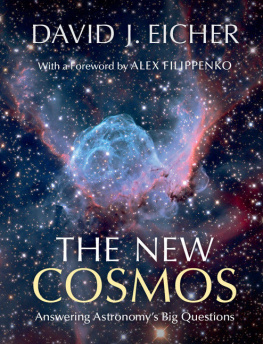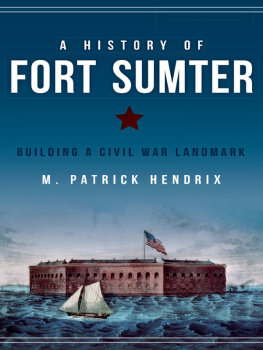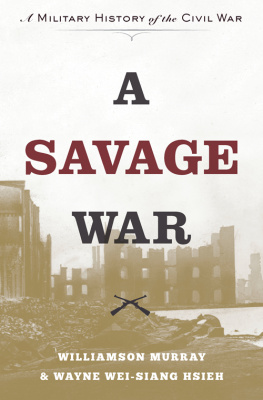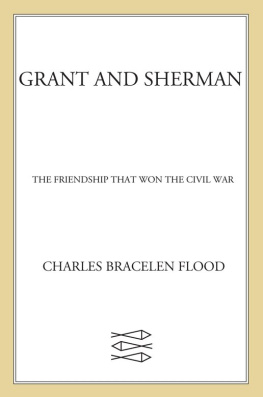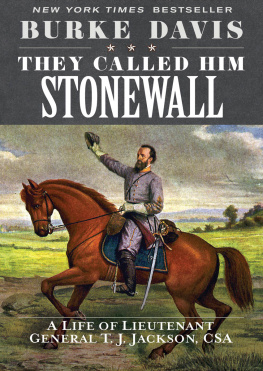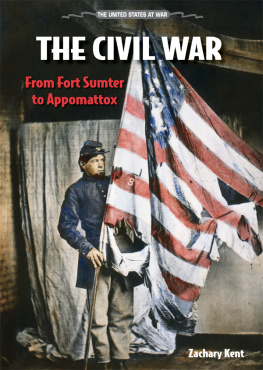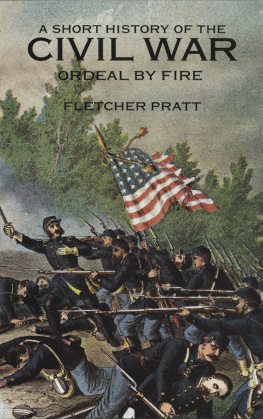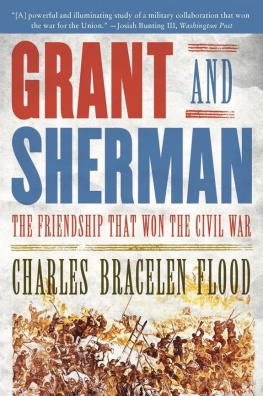Acknowledgments
IVE SPENT PORTIONS of three years locked in my study revisiting my friends of the Civil War days, constructing this narrative. I have also consulted quite a few modern-day friends along the way, but any shortcomings or errors that appear in my version of history are solely my responsibility. I have to thank my wife, Lynda, and son, Chris, whose tolerance of my writing over long hours is superhuman, and my father John Eicher, Civil War authority par excellence, who has steered me free of many hangups. I owe a great debt of gratitude to Jim McPherson, who as the leading Civil War historian of this age was splendidly generous by contributing his magnificent foreword for this book. I owe much to my good friend Russell Fay, who labored for hours reading through dozens of classics and recent scholarly tomes looking for gems that could be wrapped into this story of the war. For their continual encouragement of my projects, I also wish to thank Richard A. Sauers, John Y. Simon, Lance Herdegen, and Gary W. Gallagher. Their comments are more valuable than they could possibly know.
This book would have been but a shadow of itself if not for the brilliant oversight of Bob Bender at Simon & Schuster. His reflection on many facets of the work large and small has helped to shape it into a worthwhile story. I also thank S&Ss Johanna Li for her frequent help with many tasks. For their work in the production stages, I thank Fred Wiemer, who copyedited the manuscript; John Morgenstern, who checked the final pages; Peter Vabulas, who checked the final map proofs; and Gypsy da Silva, who supervised the copyediting and proofreading. My thanks, also, to Rachel Nagler in Publicity. My agent, Michael Choate of Lescher and Lescher Ltd., who enthused over the manuscript as it took shape, foresaw the need for such a volume and helped me to formulate the project in the first place. I thank Kelly Kizer Whitt for carefully proofing the whole manuscript and offering valuable suggestions. Thanks also to Bonnie Gordon and Peter Sutter for their encouragement and advice.
I owe a number of people at institutions across the country special thanks, too. I hope that I havent left any out who went above and beyond the call to assist me: Michael Musick, Tod Butler, Becky Livingston, and Trevor Plant of the National Archives and Records Administration, Washington, D.C.; Richard J. Sommers, Tom Vossler, David A. Keough, and Pamela Cheney of the U.S. Army Military History Institute, Carlisle, Pennsylvania; Kathy Harrison and Scott Hartwig of the Gettysburg National Military Park, Gettysburg, Pennsylvania; and Ted Alexander of the Antietam National Battlefield, Sharpsburg, Maryland. They have made fighting the Civil War over again not only worthwhile, but a pleasure.
DAVID J. EICHER
Waukesha, Wisconsin
Bibliography
ONE INDISPENSABLE SOURCE of Civil War history is The War of the Rebellion: A Compilation of the Official Records of the Union and Confederate Armies (known as the O.R. ), the 128-volume work that contains the most important papers of the war as they were sorted and published from 1880 to 1901. Though it has become fashionable to downplay the significance of the O.R. in recent years, as scholars have discovered how much manuscript material lies unresearched, the O.R. does contain key documents regarding the story of the war and retains priceless value relative to other published works. I have also used many old classics of the Civil War literature, works of high value that were published in the last three decades of the nineteenth century, and which contain resource material in the words of the participants. Ive employed some seventy-seven of these works, carefully chosen to be reliable because of the high credibility of their authors, typified by such titles as Charles A. Danas Recollections of the Civil War, Arthur Fremantles Three Months in the Southern States, and John McElroys Andersonville. I have used contemporary newspapers very sparingly. Some twenty-three newspapers and serials from the wartime period have been consulted and certain portions of them employed, but many newspapers of that era are notoriously unreliable.
Wishing to achieve as fresh an approach as possible, I have also drawn on a large amount of unpublished manuscript material, more than two hundred files altogether, from a variety of institutions. I wish to thank the staffs of the following institutions for making materials available: Alexandria Library, Alexandria, Virginia; Antietam National Battlefield, Sharpsburg, Maryland; Boston Public Library, Boston, Massachusetts; Duke University Library, Durham, North Carolina; Louisiana State University, Baton Rouge; National Archives and Records Administration, Washington, D.C.; South Caroliniana Library, University of South Carolina, Columbia; Southern Historical Collection, University of North Carolina, Chapel Hill; University of Alabama, Tuscaloosa; University of Virginia Valley of the Shadow Project Archive, Charlottesville; U.S. Army Military History Institute, Carlisle, Pennsylvania; United States Civil War Center, Louisiana State University, Baton Rouge; Virginia Historical Society, Richmond; Virginia Military Institute, Lexington; and the Virginia Polytechnic Institute and State University Library, Blacksburg. I also used documents from my own collection. Among the most curious groups of papers I went through were the Adjutant Generals Office, Generals Papers (Record Group 94) at the National Archives. Military Archivist Michael Musick described how many such officers papers have not been examined in recent years and I have utilized dozens of documents from this collection.
I have also used many recently published scholarly battle histories, drawing on their analyses of engagements and reflecting their conclusions. I have consulted 147 such works
published since the Civil War Centennial, books unpublished at the time of Catton and Foote. Similarly, I have used portions of 217 collections of period letters, diaries, and journals that have been published during the past three decades, many of them fresh sources of information about the war. Not wanting to limit the battlefield actions to male actors, I have included portions of 32 groups of letters, diaries, and journals of female participants, from the small number of female combatants to nurses, civilians, and activists. To underscore the freshness of the sources used, about 300 of the references were published in the 1990s.
BOOKS AND PAPERS
Abbott, Henry Livermore. Fallen Leaves: The Civil War Letters of Major Henry Livermore Abbott. Edited by Robert Garth Scott. Kent, Ohio: Kent State University Press, 1991.
Abel, E. Lawrence. Singing the New Nation: How Music Shaped the Confederacy, 1861 - 1865. Mechanicsburg, Pa.: Stackpole Books, 2000.
Adams, Charles Francis; Charles Francis Adams, Jr.; and Henry Brooks Adams. A Cycle of Adams Letters, 1861 - 1865. Boston: Houghton Mifflin Co., 1920.
Adams, George Worthington. Doctors in Blue: The Medical History of the Union Army in the Civil War. Baton Rouge: Louisiana State University Press, 1952.
Albaugh, William A., III. The Confederate Brass-Framed Colt & Whitney. Wilmington, N.C.: Broadfoot Publishing Co., 1993.
Albaugh, William A., III. Confederate Edged Weapons. Wilmington, N.C.: Broadfoot Publishing Co., 1993.
Albaugh, William A., III, and Edward N. Simmons. Confederate Arms. Wilmington, N.C.: Broadfoot Publishing Co., 1993.
Albaugh, William A., III, and Richard D. Steuart. Handbook of Confederate Swords. Wilmington, N.C.: Broadfoot Publishing Co., 1993.
Albaugh, William A., III, and Richard D. Steuart.


